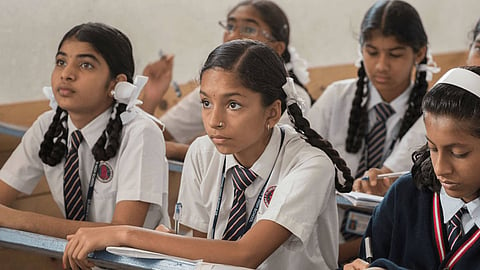For a country striving to improve access to quality education for everyone, India was hit most severely by the pandemic. Over 248 million students were out of schools as they shut down due to the raging pandemic. Moreover, the efforts to restore continuity of learning through online classes were only partially successful as the country grappled with inequities in the availability of the internet and smartphone devices in different regions and societies.
The pandemic uncovered and exacerbated some of India’s worst vulnerabilities. For instance, education sustainability for the poor children and young people came under unusual duress as families migrated back to villages, having suffered job losses in the cities. Their primary struggle relegated to surviving malnutrition and increasing poverty.
Sections of poor people who aspired to private education for their children could not afford additional costs of schooling that came from internet and smartphone expenses. The suddenness with which the pandemic struck and the pace at which it eroded essential governance and infrastructural systems have underscored the need for future responses to be more robust and systems to be more resilient.
It brings Sustainable Development Goals 2030, firmly centre stage. Ensuring access to Quality Education for everyone (SDG-4) was a salient goal, without which the Sustainable Development Agenda was practically impossible to achieve. Quality education constitutes the heart of sustainable development. It serves as a force multiplier that drives economic growth because it enhances skills amongst people, increases self-reliance, opens opportunities for better livelihoods, and empowers individuals with raised living standards.
India and SDG-4: The Indian education landscape shows several Central and state-level education schemes aimed at helping the country attain the desired educational goals.
Furthermore, NEP 2020 acts as an overarching policy providing the requisite direction in meeting various educational objectives. It emphasises equitable quality education, universal access to teaching, and lifelong learning, all of which are essential elements of the SDG-4 agenda.
While India has made significant progress in universalising primary education, marked improvement in girls’ enrolment and education completion in primary and elementary school, there continue to be several significant challenges related to access, equity, efficiency, and quality of the education system.
Addressing challenges: SDGs are comprehensive in that they are broken down into targets that can render themselves to effective execution and quantitative measurement. At the same time, one of the most significant aspects of the SDGs is the extent of collaboration they emphasise. All societal actors, including the government, NGOs, private sector, and academia, need to build capacity, fund, and innovate to achieve the mission envisioned by SDG-4 and NEP, and withstand critical problems like climate change and natural disasters
Generating sustainable finance: Innovative financing and funding mechanisms have gained prominence globally. India too has witnessed an increasing appetite to generate and utilise funds that can create social value without compromising commercial logic. For example, social and development impact bonds, outcome-based financing, income-share agreements, conditional and unconditional cash transfers, and school-provider financing can plug gaps in the educational sector’s long-term patient and intensive capital requirements.
Harnessing innovation: Some innovations that can meet the aspirations of quality education for all include: applied learning in schooling using concepts such as computational thinking; mobile schools to access remote areas, difficult terrains, or conflict-ridden regions; peer-led and community-led tutoring to improve learning outcomes and reduce dropout rates; peer learning and collaboration to enhance the quality of teachers and new formats allowing industry participation; emphasis on skilling in higher education; and more contemporary forms of course and credit structuring to meet the needs of the ‘new normal’ against the pandemic.
Integrating technology: There is a need to research and develop ways to better harness technology to aid and support achieving universal and quality education. A variety of technologies like blockchain, IoT, 5G, cloud and gamification platforms can massively impact education in the forthcoming decade. Educational institutions and teachers must be open to integrating these technologies into their education infrastructure. New technologies may allow schools and educational institutes to leapfrog traditional barriers of scale and efficiency. At the same time, support through free high-speed internet connections can be the game-changer for the pernicious educational divide in the country.
In conclusion, it is imperative to work towards quality education. Poor quality education leads to poor learning outcomes, eventually pushing children out of the education system and leaving them vulnerable to child labour, exploitation, and abuse.

